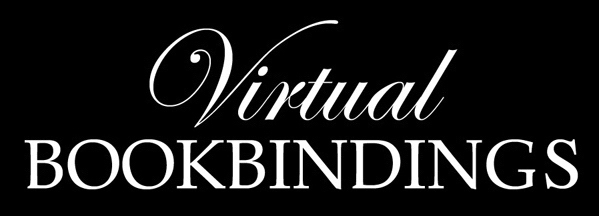

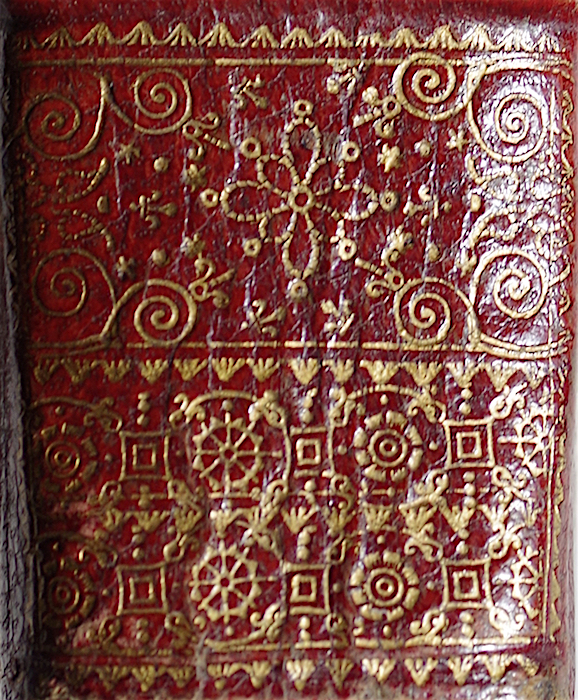
| I mentioned on the previous page that there appeared to me to be retrospective tooling in this 1733 Paiete binding, I show above an enlarged detail of the lower spine, and by a stroke of luck, I found what looks to be the same palette in a binding of no small importance. |
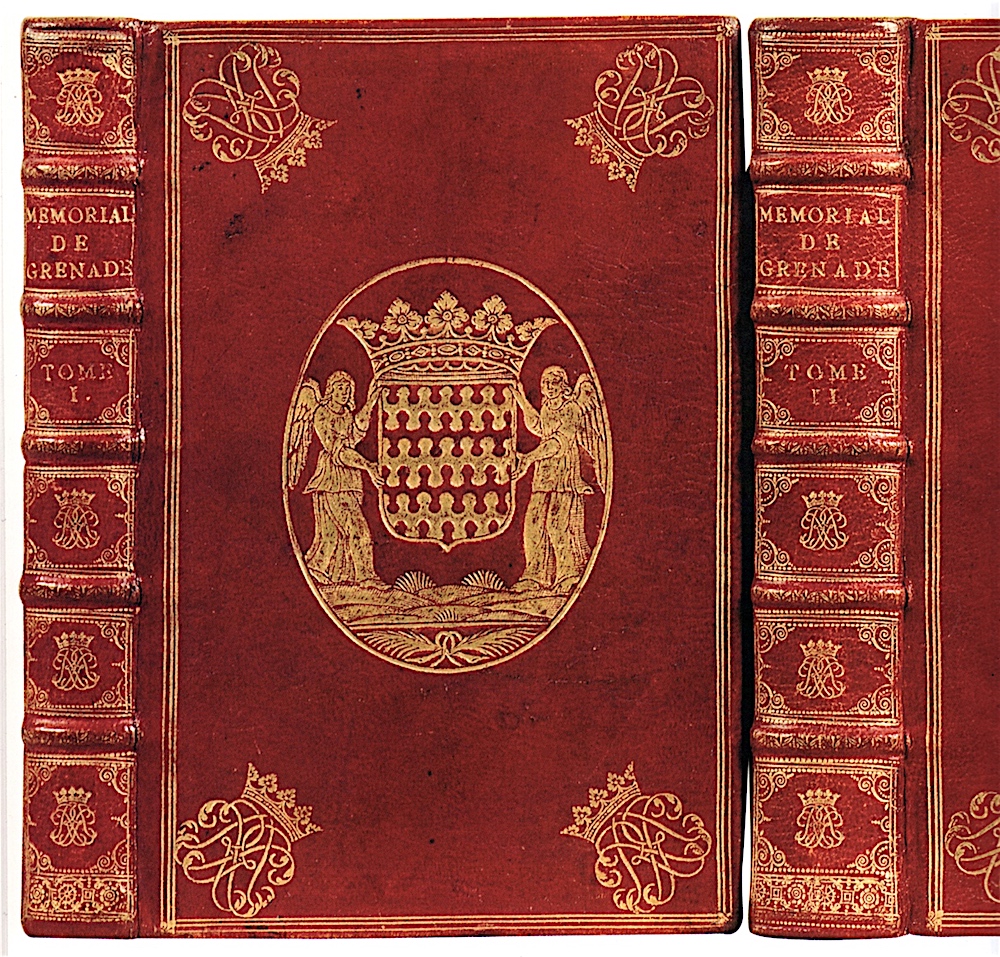
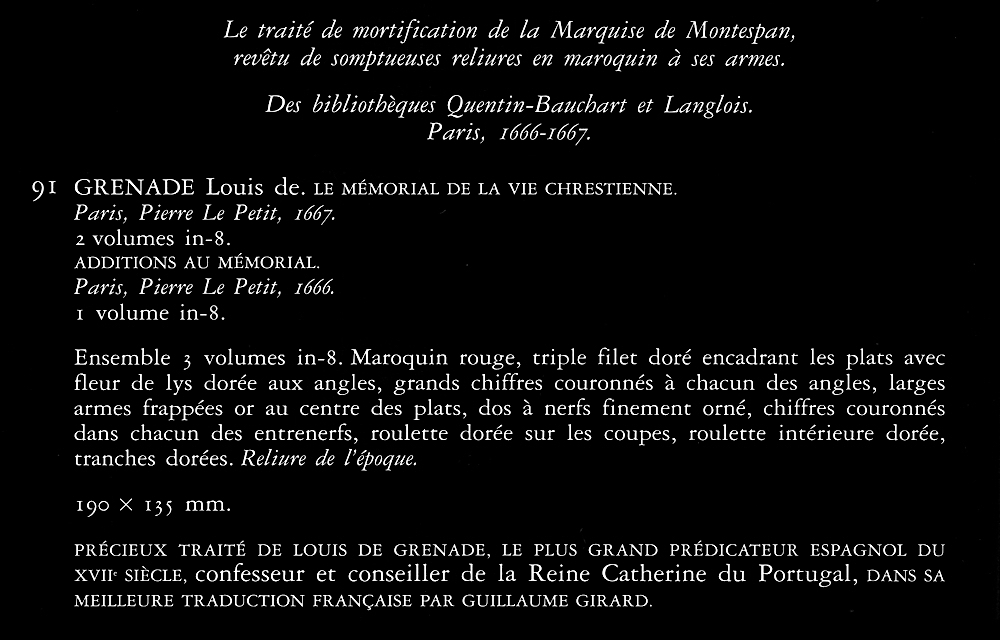
| The binding shown above is from 1998 Sourget catalogue XVII, lot 91, pages 262-265. After researching the incredible history of la Marquise de Montespan, (click here to see it) I discovered that this binding may have be made for the Marquise after she moved into Château d'Oiron (En 1700, la marquise acquiert le Château d'Oiron dans les Deux-Sèvres) where she formed her book collection of mainly religious works (click here to see an inventory of her Bibliotheque). This then us to an exciting possibliity that this binding was possibly made by Boyet. |
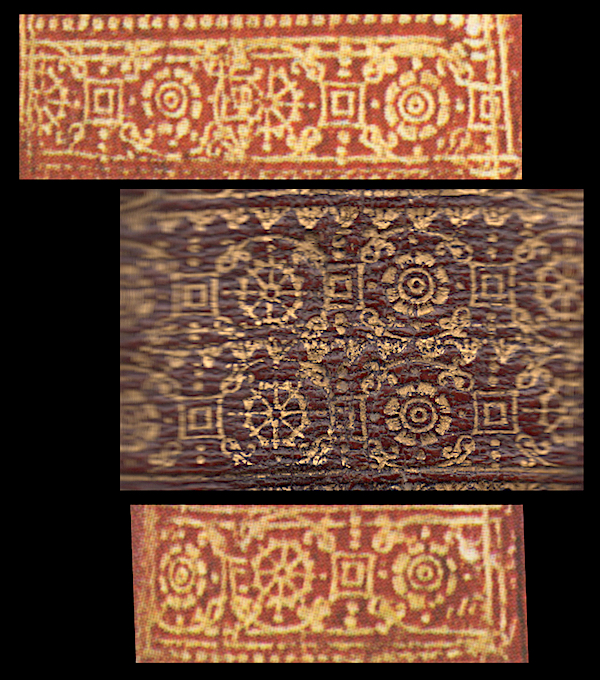
| In Comparative Diagram 1, we see a scan the 1733 Piete palette in the center with copies of the 1666 Grenade palette examples above and below. I do not recognize this palette as being one of Boyet's, however these imprints look so similar that we cannot decide if they are different or from the same tool. One might guess that the binding of la Marquise was made by a royal binder, certainly a high quality binding. |
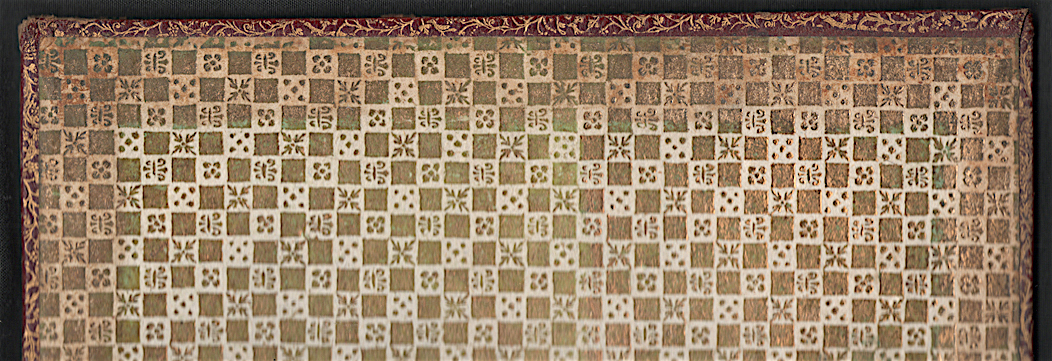
| While there seems to be many unusual decorative details on this 1733 binding, the inner dentelle and brocade paper are also very interesting, and I was very lucky to find this particular brocade paper (Brokatpapier) on Limédia galeries (click here to visit their very useful site) as a search of the German online collection did not find it, which makes me think it is an uncommon type. The fact that it was sold in Caen may also be an important clue. |
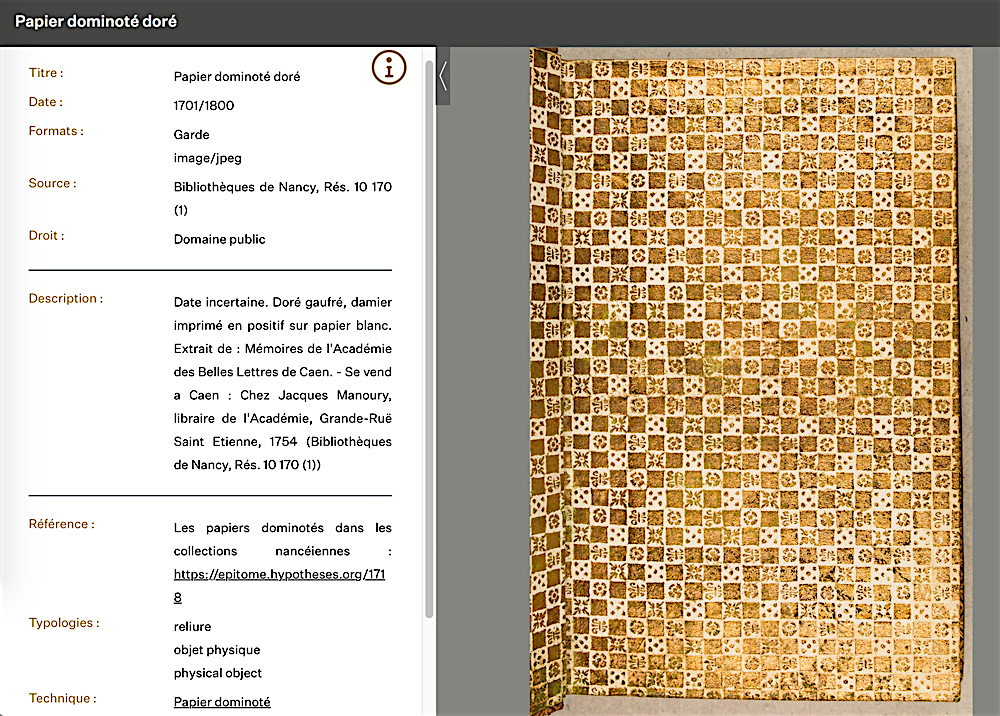

| Without a doubt the 1733 roulette that has been used to fashion an inner dentelle is the most unusual feature of this binding, it is composed of various bird and branch motifs, I cannot recall seeing another quite like it. This will be a easy way to identify this binder if you ever find another example. Barber does not show any examples of this bird and branch roulette. |

| The next thing I want to point out, is that even though we do not have a full view of the spine of the 1734 CHAMPBONIN we can just barely see the details of it and in these details we find the matching elements in the 1733 Paiete spine, indicating that the two spines have a lot in common which is to be expected as the dentelles are also very similar. It was not until I looked at these spines for a long while that i discovered something that should have been immediately obvious |
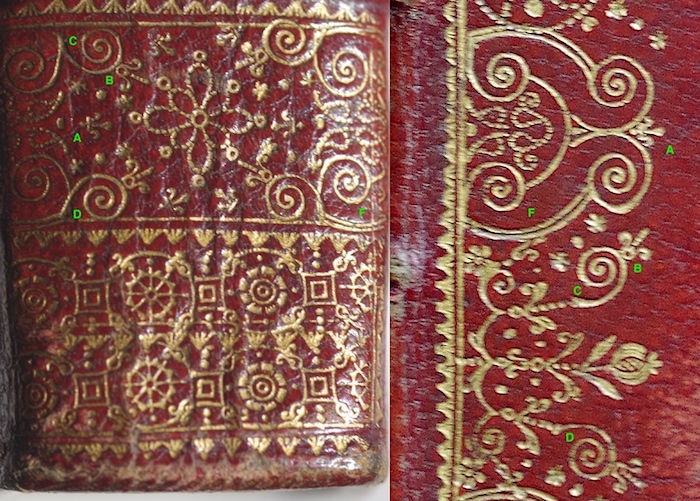
| In Comparative Diagram 3, I attempt to show that the large fleuron that has been used in the dentelle of the boards, and is item number 10 in Comparative Diagram 4 shown below, has also been used to decorate the corners of the spine panels. This is an unusual and labor saving technique in the decoration of the panels, however the many small satellite tools that have also been used indicate that there was a considerable amount of painstaking detail invested in these panels. Click on the image at the top of the page to see an enlargement of these panels. |
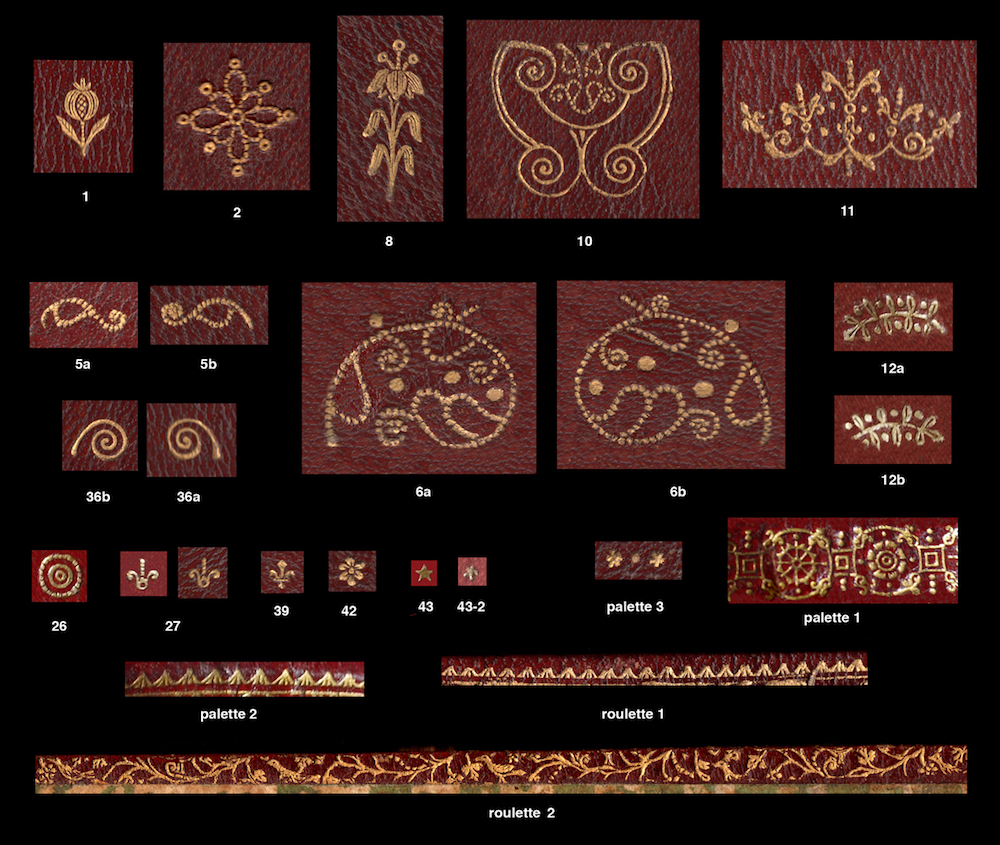
| I have assembled in Comparative Diagram 4, almost all of the 1733 Piete imprints and added provisional numbers so that we can refer to them. Item 10 for example has a very interesting retrospective design. The style of this motif derives from the long evolution of the so called fanfare bindings that appeared in the 16th century, these transformed with the new pointille tools in the first quarter of the 17th century. This fanfare was continued by Antoine Ruette into the mid century when a new workshop appeared, perhaps under his direction at Charenton. The Charenton binders moved to Amsterdam in the last quarter of the 17th century (due to the religious persecution of Protestants in France), and continued to make fanfare bindings in the style of Ruette however with the addition of some unique tools that soon became their trademark. It is the design of these tools that the 1733 imprint 10 emulates with an unmistakeable Charenton style. (click here to see the Charenton imprints). The 1733 Piete pointille tools 5a and 5b as well as 6a and 6b are also stylistically from the 17th century. Thus we see we see in this binding, a retrospective mixture of tools and design. Both Padeloup and Boyet dabbled in retrospective bindings in the early part of the 18th century, Boyet was truly a master of this art and his bindings fooled all of the 19th and 20th century experts. It is also worth noting that Boyet had branch tools comparable to 12a and 12b which were some of his favorite tools and he used them in a similar fashion on his spines. Boyet also had a bird and branch palette that was in many was similar to roulette 2. Thus I can see the decoration of this 1733 Piete as being a sort of amalgam of the work and tools of Padeloup and Boyet. |
|
click here to return to the HOME page. click here to see an INDEX of the 2017 pages. see below links to previous work |
| Even experts are sometimes wrong, before you spend thousands on a book, please do your own research! Just because I say a certain binding can be attributed to le Maitre isn't any kind of guarantee, don't take my word for it, go a step further and get your own proof. In these pages I have provided you with a way of doing just that. |
| Virtual Bookings, created by L. A. Miller | return to the Home page of VIRTUAL BOOKBINDINGS |